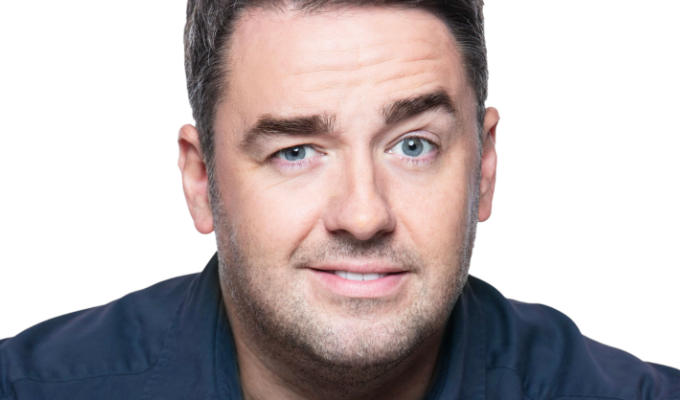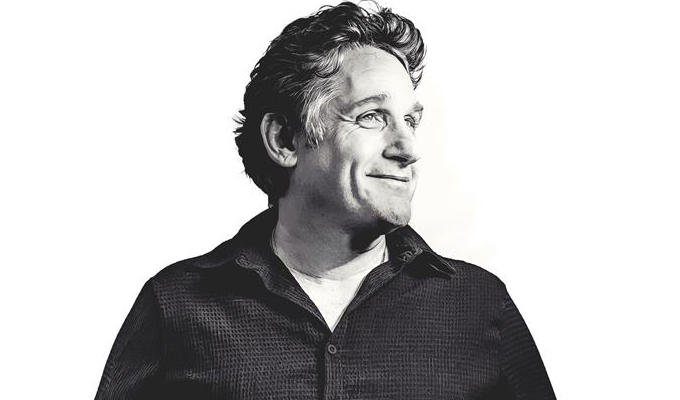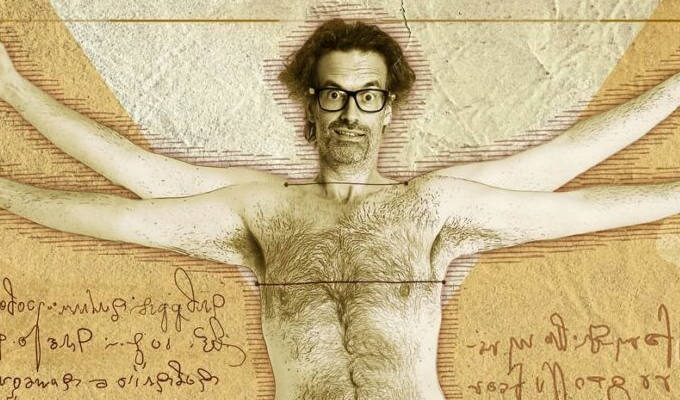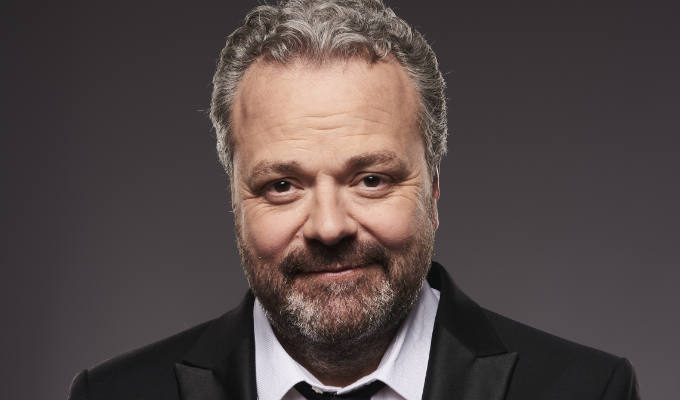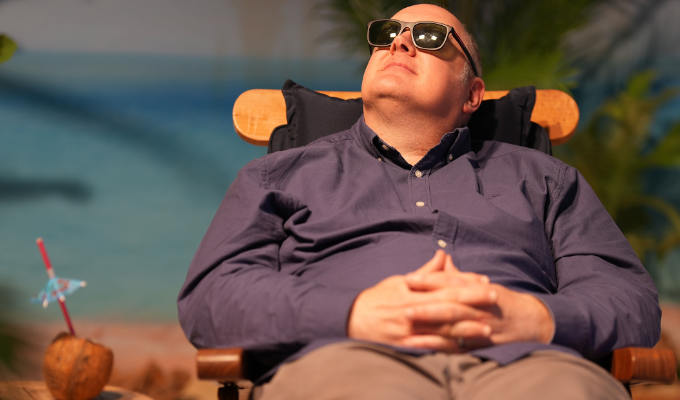
'I want to inhabit people’s nightmares...'
Dara O Briain on his new documentary about the Sun
How would you describe the series?
We’ve made the ultimate air fryer documentary. What was great fun in the series was covering the Sun as a creator and destroyer - it showers us all with energy, but it will kill us. Down the line, the Sun will destroy us.
Before making this documentary, did you think about the Sun much?
In terms of my interest in the stars, not really. If you're in the garden with your telescope, there are a few directions you can take; you can watch planets, observe deep space, or view the Sun. The Sun is a speciality, and you need filters and special equipment, which I’ve never had.
I have the filters now, because I bought them for the eclipse in Texas. Then the eclipse turned out to be so cloudy I had to take the filter off and just point the camera at the Sun. Now that I've made this series, I’ll observe the Sun more, as long as there’s a break in the clouds.
Do you know any good facts about the Sun?
I know 1.3 million Earths can fit in the Sun and it’s 93 million miles away from Earth. My one good pub fact - or to impress a child - is about a photon’s journey across the Sun. A photon takes eight minutes to travel from the surface of the Sun to Earth, but how long does it take the same photon, on average, to travel from the middle of the Sun to the outer edge of the Sun?
The answer is a million years. On average, it takes a million years, because when the photon is released it pings around all the way to the outer edge, bouncing off all the other photons. Then it races to us at the speed of light, hitting your eye a million years and eight minutes after it was first released.
How hard is it to wrap your head around the numbers concerning the Sun's power and scale?
What we create in energy in a year, the Sun sends to us in a matter of minutes, and the Sun accounts for 98 per cent to 99 per cent of all the matter in the Solar System. There’s a little bit left to make eight planets and some asteroids.
Then, an astronomer will say, ‘Do you want to see a proper sun?’ and point to one in space which is genuinely huge and thousands of times larger than ours. We have a bog-standard Sun, one just about big enough to be a sun.
How did you find your first eclipse experience in Texas?
The weirdest moment in Austin was when it became so dark at 1.30pm the city lit up, because all the light sensors in the skyscrapers believed it was nighttime. As the skyscrapers lit up, there was a massive cheer.
When the clouds broke, we saw the eclipse perfectly for three seconds - you could see the sun’s corona, solar prominences and all the different colours. That was amazing. You could see it all in three seconds. And then the clouds closed and the Sun never came back. We had a tiny bit of the eclipse.
I’m happy I was part of a communal event, because it was more fun to be with 5,000 people and have a sense of occasion. As I walked around I was constantly stopped by people who said, ‘I really love Taskmaster.’ That was a weird thing to hear in Austin.
Is eclipse chasing your new addiction?
I totally want to see the next one in 2026, which is across northern Spain. In 2027 there’s one over Luxor, which, after Mysteries of the Pyramids, is where my worlds collide.
What surprised you the most when you visited Houston to learn about space weather monitoring?
We visited a room where a team of people monitor the Sun for explosions, and we learned about the radiation problem in space travel.
Earth is surrounded by a shell of magnetism which repels radiation, but there’s a pool of radiation called the South Atlantic Anomaly. The International Space Station can’t avoid this dip and will clip or pass through this bucket of badness on a regular basis. Something like 40% of an astronaut’s career radiation accumulation is from plunging into the anomaly.
In the series you meet Colonel Terry Virts, who shares his story about radiation exposure - how shocked were you by his experience?
All astronauts carry a meter on their bodies at all times which measures how much radiation they’ve absorbed, and Terry was quite honest about his experience. Admittedly many of the dots and spots Terry had were due to a bad reaction with his medication, but he did have skin cancer.
Radiation may put a limit on how far we can actually travel in space, which is an unfortunate possibility we tend not to dwell on.
You visit the world’s biggest solar furnace and witness a demonstration of how the Sun will eventually destroy the Earth - how did that make you feel?
I had a pressing fear greater than the destruction of the planet, because the laboratory we were inside had a hole in the floor with a ten storey drop. I’m not great with heights, so if I glanced down I felt wobbly. I was already in a state of existential dread. I thought at any moment I’d pitch forward and as I fell towards the mirrors my last thought would be, ‘This is a stupid way to end a science documentary, Dara.’
The fact is we’ll be long dead by the time the rocks start burning and the planet catches fire, because Earth will have been inhospitable for billions of years. Our time will have passed, unless we’ve moved somewhere else. I was able to rationalise the planet’s future away.
How mind blowing is the ITER fusion project ITER, which aims to replicate the same reactions inside the Sun?
We visited ITER at a perfect time, because once it’s built it will be closed and encased in concrete. The place has to be sealed because it will become irradiated, so you can't go back in again to find your phone you left inside. There won’t be a breakfast TV segment where they take a walk around the interior on the day it’s turned on.
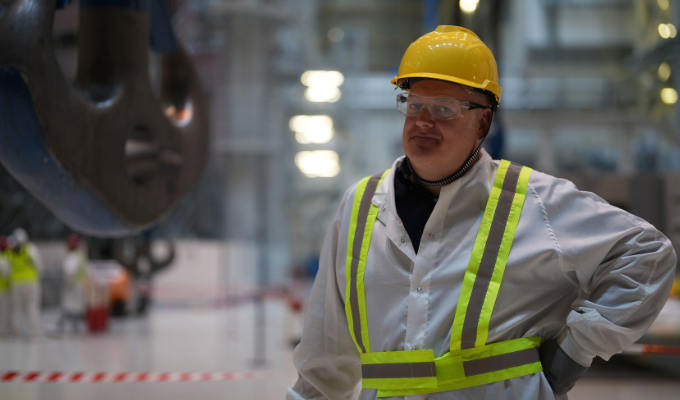
Dara at ITER
In terms of the level of construction difficulty and the level of operational controls, a comparable facility is the Large Hadron Collider. ITER is constructed from ten million parts, which means there’s a lot of soldering and precision work taking place. It is an astonishing place and the scale is ridiculous.
What’s sweet is how people don’t know about it and they don’t have a large PR budget, so they haven’t been able to tell people about the project. At the Large Hadron Collider visitor centre you can buy a baseball cap or t-shirt bearing equations, but ITER hasn’t quite thought about informing people they’re building the world’s most complicated machine in Provence.
When Brexit happened the UK left Euratom [The European Atomic Energy Community], so all the British scientists had to immediately take French residency to continue to receive payment for their work. ITER is an incredible international effort Britain stepped away from because of Brexit. There was a lot of slapping of foreheads, and it’s an example of a stupidly unintended consequence.
What’s the ambition for ITER?
They want to see if it’s able to produce four times the amount of energy they put into the fusion process. If so, great, they’ll spend another 15 years building another one and then another one.
The dream is ITER will supply our energy needs, because something has to! Between crypto, AI, and all of us storing five versions of a photograph we only need one version of, we're quietly using up all the power, and that's not ideal.
What do you hope viewers take from watching the series?
We tend to become bogged down - particularly during an election season - with what we can't do and what's going wrong. The sheer scale and ambition of ITER demonstrates how humans can pull together and create an astonishing project to provide a future source of energy.
The other thing to take is the Sun will destroy us. I want to inhabit people’s nightmares - now when you enjoy the warmth of a summer’s day, also know the Sun will destroy us.
• Secrets of the Sun with Dara Ó Briain is on Channel 5 and My5 on next Tuesday and Wednesday at 9pm.
Published: 9 Jul 2024

